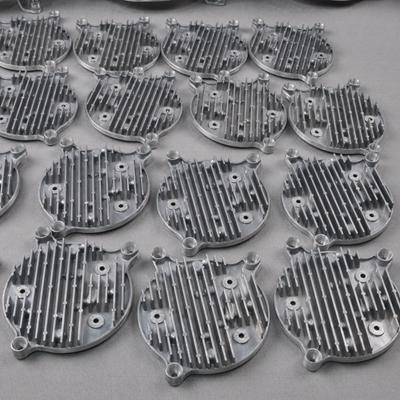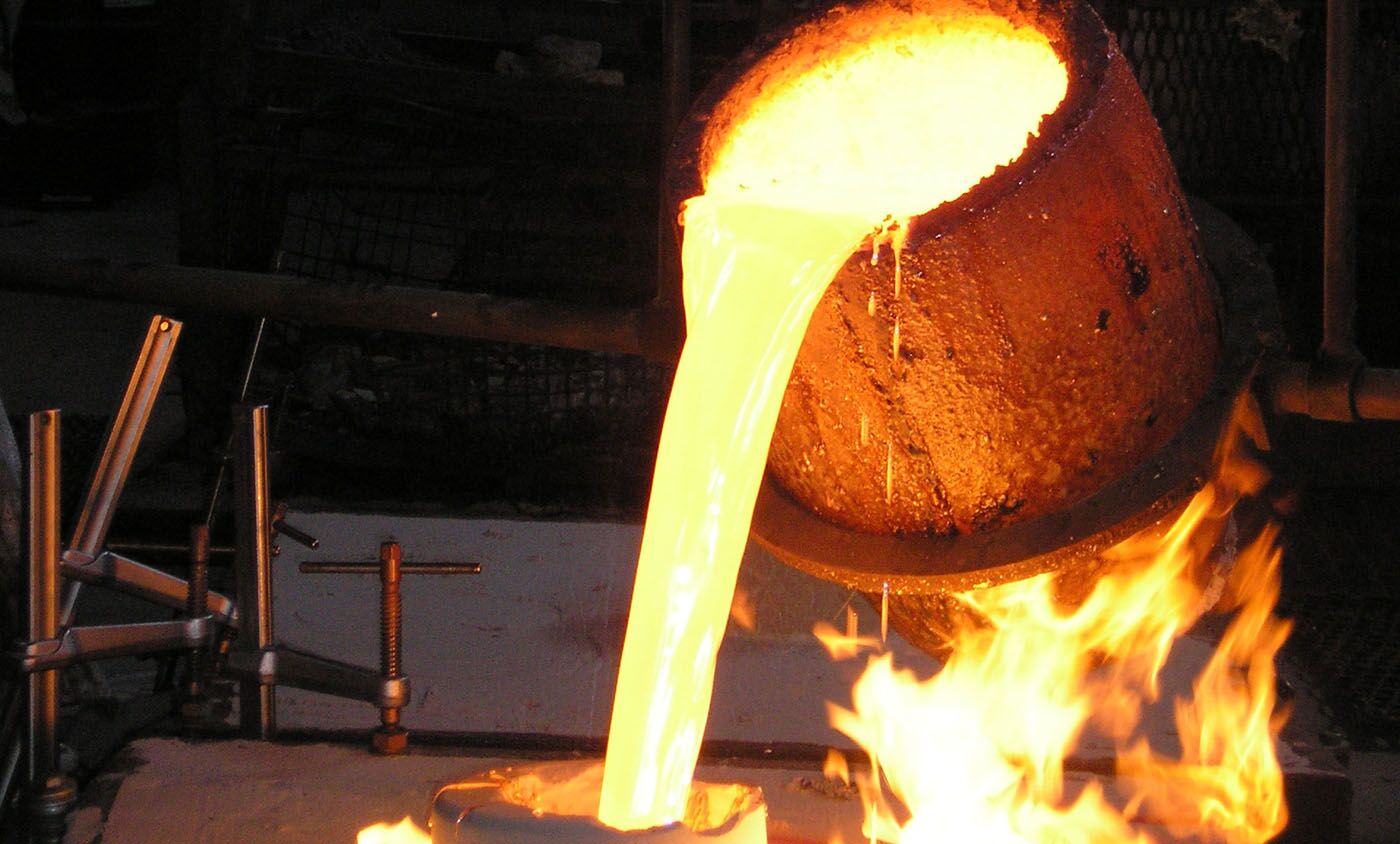The steps that make Aluminum Casting highly reliable and precise
Comprehending the Manufacturing Process and Maintenance Practices for Aluminum Foundry Products
The manufacturing process for aluminum factory items is elaborate and calls for a detailed understanding of numerous phases. From the melting of light weight aluminum at heats to various casting approaches, each action plays a crucial duty. Furthermore, upkeep methods guarantee devices stays reliable and products are devoid of problems. Nonetheless, the complexities of these processes and their effect on item high quality raise crucial concerns concerning best practices and innovative techniques in the industry.
Summary of Light Weight Aluminum Factory Products
Aluminum foundry items are critical parts in numerous industries, providing a mix of light-weight toughness and corrosion resistance. These products are typically utilized in markets such as automobile, aerospace, and building, where durability and performance are critical. Light weight aluminum's reduced density makes it a perfect material for applications needing reduced weight without sacrificing architectural stability. The versatility of light weight aluminum permits the production of complex geometries, accommodating diverse layout demands.
In addition, light weight aluminum foundry items can be tailored with different alloys to enhance specific buildings, such as boosted thermal conductivity or raised firmness. Their resistance to oxidation and rust assurances durability, making them appropriate for both indoor and outside applications. The combination of these characteristics contributes to the growing choice for light weight aluminum in modern-day production. As markets seek to optimize performance and sustainability, light weight aluminum shop items remain to play a vital duty in meeting these needs.
Thawing Refine: Transforming Aluminum
The melting process is a basic action in the manufacturing of light weight aluminum foundry items, as it changes solid aluminum right into a molten state suitable for spreading. This process commonly happens in a heating system, where scrap light weight aluminum or ingots are warmed to temperatures around 660 degrees Celsius. The selection of heater-- be it electric, gas, or induction-- impacts the performance and cost of melting.
During melting, cautious consideration is provided to the removal of contaminations, such as oxides and various other pollutants, which can negatively impact the top quality of the final item. Changes may be contributed to assist in this filtration process, enhancing the fluidness of the molten steel.
Additionally, temperature level control is vital to ensure harmony and protect against overheating, which can lead to oxidation. The melting process not only prepares light weight aluminum for spreading but likewise plays a considerable duty in identifying the honesty and residential or commercial properties of the final shop items.
Casting Strategies in Aluminum Foundry
Different casting strategies are utilized in aluminum shops to develop high-quality parts, each fit to different applications and specifications. Amongst the most typically utilized methods are sand spreading, die spreading, and financial investment casting. Sand spreading uses a mix of sand and binder to form mold and mildews, enabling huge parts and intricate shapes (aluminum foundry). Die casting, characterized by the high-pressure shot of liquified aluminum right into steel molds, creates repeatable and exact components, suitable for automation. Investment casting, or lost-wax spreading, includes producing a wax model that is covered in a ceramic covering, enabling great details and complex layouts. Each technique has its advantages; sand spreading is cost-effective for low-volume production, while die spreading offers effectiveness for high-volume runs. Financial investment spreading is favored for elements needing extraordinary accuracy and surface finish. Choosing the ideal technique depends upon variables such as production volume, part complexity, and material residential or commercial properties
Ending Up Procedures for Light Weight Aluminum Elements
After casting strategies have shaped the aluminum components, finishing procedures play a considerable role in improving their capability and visual charm. These procedures typically consist of machining, surface area therapy, and finish applications. Machining includes accurate removal of material to attain wanted measurements and surface area high quality. This is crucial for making sure that elements fit effortlessly into more tips here their intended applications.
Surface area therapies, such as anodizing and polishing, are utilized to boost deterioration resistance and improve visual characteristics. aluminum metal casting. Anodizing, particularly, supplies a protective oxide layer, making the aluminum a lot more long lasting and visually appealing

Upkeep Practices for Durability
Carrying out routine maintenance methods is crucial for ensuring the longevity of light weight aluminum shop items. Regular examinations should be carried out to determine deterioration, as very early detection can stop pricey repair work and expand the life expectancy of components. Cleaning tools and equipment regularly decreases the danger of contamination, which can adversely affect item high quality. Lubrication of moving components is likewise essential, as it decreases rubbing and wear, boosting operational performance.
In addition, the application of a precautionary maintenance schedule assists in systematically addressing possible issues prior to they intensify (aluminum casting company). This includes monitoring for leaks, making certain appropriate alignment, and adjusting machinery. Team training on appropriate handling and upkeep methods fosters a society of care, which is crucial for maintaining product honesty. Lastly, recording maintenance activities gives important understandings right into performance trends, permitting informed decision-making relating to future upkeep techniques
Top Quality Control and Testing in Aluminum Foundry Production
Quality assurance and screening are paramount in aluminum foundry production, as they guarantee that end products satisfy defined criteria and client assumptions. This procedure starts with raw product evaluation, making sure that light weight aluminum alloys abide with called for make-ups. Throughout the manufacturing cycle, in-process examinations are performed to check criteria like temperature level, product, and pressure flow.
Different tests-- such as dimensional checks, aesthetic examinations, and non-destructive screening-- are performed to identify any kind of problems once spreading is complete. Mechanical properties, consisting of tensile strength and solidity, are examined through standard testing approaches.
In addition, adherence to market requirements, such as ISO and ASTM, is crucial for guaranteeing product quality. Analytical process control strategies are frequently used to analyze manufacturing information and assist in continuous enhancement. By carrying out strenuous quality assurance measures, aluminum factories can enhance item integrity and lessen waste, eventually leading to higher customer complete satisfaction and operational performance.
Often Asked Inquiries
What Are the Ecological Influences of Light Weight Aluminum Factory Workflow?
Light weight aluminum foundry procedures can result in considerable ecological influences, consisting of air contamination from discharges, water contamination from waste discharge, and energy intake adding to greenhouse gas exhausts, ultimately affecting local ecological communities and community health.
How Do Aluminum Rates Affect Foundry Production Choices?
Light weight aluminum rates significantly influence factory manufacturing choices; higher prices may lead to reduced result or boosted effectiveness steps, while lower rates can encourage enhanced production and investment in brand-new innovations to boost competition and earnings.
What Precaution Are Essential in Light Weight Aluminum Foundries?
Necessary precaution in light weight aluminum factories include protective equipment, appropriate ventilation to lower inhalation of fumes, normal devices maintenance, training on emergency situation procedures, and adherence to safety and security methods to avoid accidents and injuries amongst workers.
Can Light Weight Aluminum Be Recycled, and Exactly How Is It Refined?
Light weight aluminum can indeed be Resources reused. The process entails collection, melting, and reforming the product into brand-new items, considerably reducing power intake and environmental influence compared to key aluminum manufacturing while maintaining material top quality.
What Are Common Issues in Aluminum Spreading and Their Causes?

The manufacturing procedure for light weight aluminum factory products is intricate and calls for an extensive understanding of several stages. Light weight aluminum factory products are essential parts in different markets, supplying a mix of light-weight stamina and corrosion resistance. The melting procedure is an essential step in the manufacturing of aluminum foundry items, as it transforms strong aluminum right into a liquified state suitable for spreading. Executing regular upkeep methods is important for ensuring the long life of aluminum factory products. Quality control and testing are paramount in light weight aluminum foundry manufacturing, as they guarantee that last items satisfy defined requirements and client assumptions.